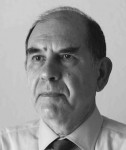Nikos Salingaros tells us about biophilic environments and their positive impact on human beings.

Nikos A. Salingaros, PhD was born in Perth, Australia. Internationally recognized Urbanist and Architectural Theorist. Professor of Mathematics at the University of Texas at San Antonio, with guest professorships in Architecture at the Delft University of Technology, Tecnológico de Monterrey, Querétaro, Mexico, and Università di Roma III. Has directed and advised eighteen Masters and PhD theses in architecture and urbanism. Numerous scientific publications, including the books Algorithmic Sustainable Design, Anti-Architecture and Deconstruction, A Theory of Architecture, Design for a Living Planet, Principles of Urban Structure, P2P Urbanism, and Unified Architectural Theory, which are translated into many languages.
Archiimpact: How much do you think that architecture can build emotionally nutritive environments compared to what relationships with people do? I mean that high-quality of relationships do create emotionally empowering environments, can the atmosphere of a place have such effect too?
Nikos A. Salingaros: Emotions can have either of two opposite effects on our body, either positive or negative. We, as all living beings do, seek out positive emotions, because those turn out to improve our health and wellbeing. At the same time, we have sensors that detect negative effects, so that we can position our body to avoid them. Those negative effects create harmful stress and they either make us sick directly, or lower our immune responses so that pathogens we would ordinarily fight off manage to infect us.
Of the many factors that contribute to human wellbeing is Biophilia, our attraction to the geometry of biological structures. This very broadly includes enjoying environments that are either natural, or that mimic nature in an essential geometrical manner, but not just as a superficial copy or decoration. Biophilia also includes our positive interaction with other persons, which is necessary for us to live life fully.
Scientific studies, including mobile robotics, identify that what attracts us to the environment and to other animals is information. This information has to be “natural”, which means that our cognitive system is able to process it easily. It also has to be information rich in content. Complex information, not simplistic, but which is coherent in a way that it is grasped by our cognitive apparatus. Mathematically, this occurs whenever information is fractally-coded. The opposite case occurs when information is random so there is no coherence. Our mind sees information but cannot grasp any message; therefore our body rebels with a state of stress.
Communication with other humans obeys the same principles. We welcome and thrive on one-on-one interchanges with other persons. We are able to exchange ideas and complex messages. Not only the words of what we say matter, but most important are the simultaneous moods created by voice tone, musicality, cadence and rhythm; all of these contribute to a healthy conversation with another person. This process of emotional communication can be expanded to include other persons. However, a limit may be reached when too many people are talking at once, and the message becomes jumbled and random. We no longer find such a situation healing.
An architectural or urban setting can present information that is fractally coded, where visual structure exists at every magnification, and all the different scales are coherent within each other. This type of architecture resembles traditional ornamented buildings and interiors, and is the opposite of minimalistic forms that are empty of information content. Another opposite is deconstructivist architecture, which intentionally breaks geometrical coherence. In many cases, the human brain cannot grasp the whole, precisely because the architect did not create relationships between the component parts: that was the design intention. But a human being cannot relate viscerally to such a form in a positive manner.
For more reading you can download his book Biophilia-Healing Environments.



Un comentario en “Micro-interview: Nikos Salingaros and Biophilia”